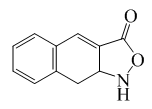| Glehnia | |
|---|---|

| |
| Scientific classification | |
| Kingdom: | Plantae |
| Clade: | Tracheophytes |
| Clade: | Angiosperms |
| Clade: | Eudicots |
| Clade: | Asterids |
| Order: | Apiales |
| Family: | Apiaceae |
| Subfamily: | Apioideae |
| Tribe: | Selineae |
| Genus: | Glehnia F.Schmidt |
| Species: | G. littoralis
|
| Binomial name | |
| Glehnia littoralis F. Schmidt ex Miq.
| |
Glehnia is a genus of plants in the carrot family, Apiaceae. It is monotypic, being represented by the single species, Glehnia littoralis,[1] commonly known as beach silvertop and American silvertop. The genus was named after Russian botanist Peter von Glehn.[2]
Description
It is a long-taprooted plant forming a basal patch of leaves, with each leaf made up of several rounded, lobular segments. It reaches a maximum height exceeding .5 metres (1+1⁄2 feet), with the North American subspecies only reported to reach 6.5 centimetres (2+1⁄2 inches).[3] The plant's erect stem is topped with an umbel of carrotlike white flowers.
Chemistry

The plant contains naphthisoxazole A.[4]
Taxonomy
Two subspecies exist, one in Asia and one in North America; the latter is named leiocarpa.[3]
Distribution and habitat
It is native to eastern Asia, particularly eastern China, Japan, and far-eastern Russia, and western North America from Alaska to northern California. It can be found on sandy beaches and dunes.[3]
Uses
The plant is perhaps best known as a Chinese herbal remedy for cough.[5]
References
- ^ Wu Zhengyi (1983). "On the significance of Pacific intercontinental discontinuity". Annals of the Missouri Botanical Garden. 70 (4): 577–590. doi:10.2307/2398977. JSTOR 2398977.
- ^ "White Flowers". Netarts Bay Today. Retrieved 19 November 2009.
- ^ a b c Spellenberg, Richard (2001) [1979]. National Audubon Society Field Guide to North American Wildflowers: Western Region (rev ed.). Knopf. p. 340. ISBN 978-0-375-40233-3.
- ^ Li G.Q.; et al. (2008). "A new isoxazol from Glehnia littoralis". Fitoterapia. 79 (3): 238–239. doi:10.1016/j.fitote.2008.01.002. PMID 18325682.
- ^ Tang, Weici and Eisenbrand, Gerhard Handbook of Chinese Medicinal Plants : Chemistry, Pharmacology, Toxicology, pub. Wiley-VCH 2011 ISBN 978-3-527-32226-8 Vol.1 pps. 599-600 Glehnia littoralis.
External links
- "Glehnia littoralis". Germplasm Resources Information Network. Agricultural Research Service, United States Department of Agriculture.
- USDA Plants Profile
- Flora of China
- Photo gallery
